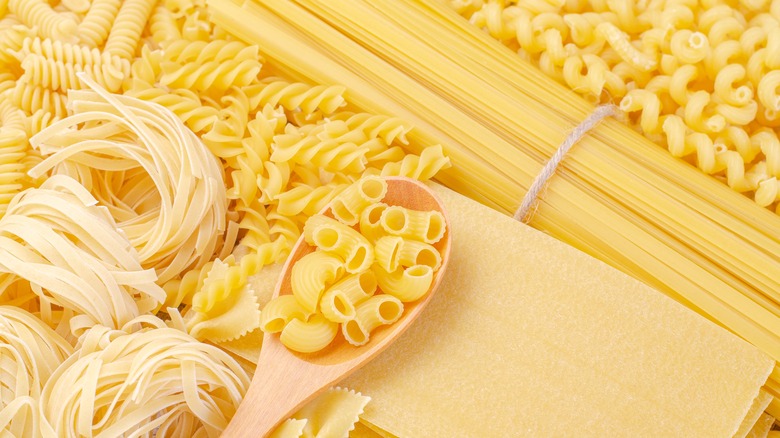Why Ina Garten Uses More Than One Type Of Noodle In Pasta Dishes
While some people say cooking differently shaped pasta together is a faux pas you do not want to commit, Ina Garten says, not so fast. In her cookbook, "Cook Like A Pro," the Barefoot Contessa reveals that she is not only a fan of mixing those differently shaped pasta, but she does it to use up all those leftover bags of pasta fragments that would otherwise go to waste. Garten wrote, "I love using two different kinds of pasta, not only because they add great texture but because you use up the leftover boxes of pasta in your pantry."
So, if you have leftover boxes of fusilli and penne, don't fret, you can cook them together; however, there is a simple rule that you need to adhere to when following Garten's lead of mixing up your pasta: You want to keep short pastas with short pastas and long pastas with long pastas. But as sophisticated as we think we are for throwing mixed shapes of pasta into a boiling pot, Italians have been doing it for a long time and have a name for this cuisine concept: pasta mista.
Keep like shapes together
Pasta mista originated in Naples and is used to make the traditional Neapolitan favorite that is known as pasta e fagioli, a comforting stew made with pasta, beans, and tomato sauce. It is quite tasty. But when making pasta using differently shaped noodles, it is important to remember that the cooking time is really what influences what pastas you mix together. When they are all the same size and the same general thickness, they are going to cook more uniformly in the same amount of time. Violate this rule and you will end up with squishy, squashy, inedible pasta.
Once you've freed your mind about this noodle approach, you will be cooking up pasta dishes like Garten's Baked Pasta with Tomatoes & Eggplant, in which she mixes rigate and fusilli pasta to achieve the fun texture this dish offers. But don't be afraid to experiment. Your mixing of noodles may just create the next "it" pasta dish.

